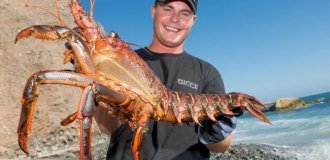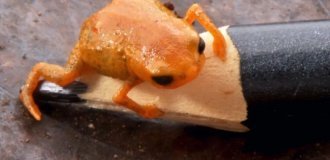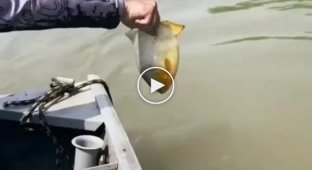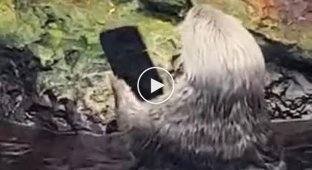Giant otter: it attacks crocodiles, anacondas and even jaguars (10 photos)
If you are called an otter, do not rush to throw tomatoes at your opponent. Take this as a compliment! Because the otter is a very good and useful animal. And a giant otter is not only useful, valuable fur and 30 kilograms of live weight, but also the noble title of apex predator! 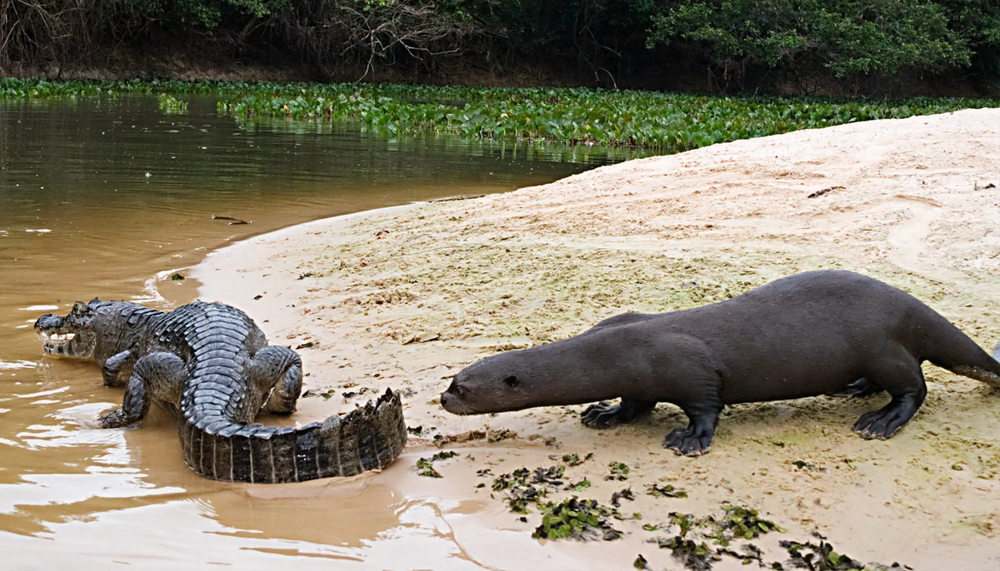
- Otter, go away, can’t you see? It's a cayman! “I see, I was just about to have lunch!”
These guys are so tough that they can easily kick the butts of anacondas, caimans and piranhas. So, being an otter isn't so bad anymore?
The giant or Brazilian otter is a contender for the title of the largest and most successful representative of the entire mustelid family. The animal fully justifies its name: the otter grows up to 2 meters in length! Add to such solid dimensions a pinch of self-confidence, a handful of communication skills, a bucket of family values, a jar of dexterity, a cup of fearlessness and don’t forget more sharp teeth and claws! As a result, we get a truly unimaginable predator with the habits of Dominic Toretto: they don’t mind playing around, but family is sacred to them! 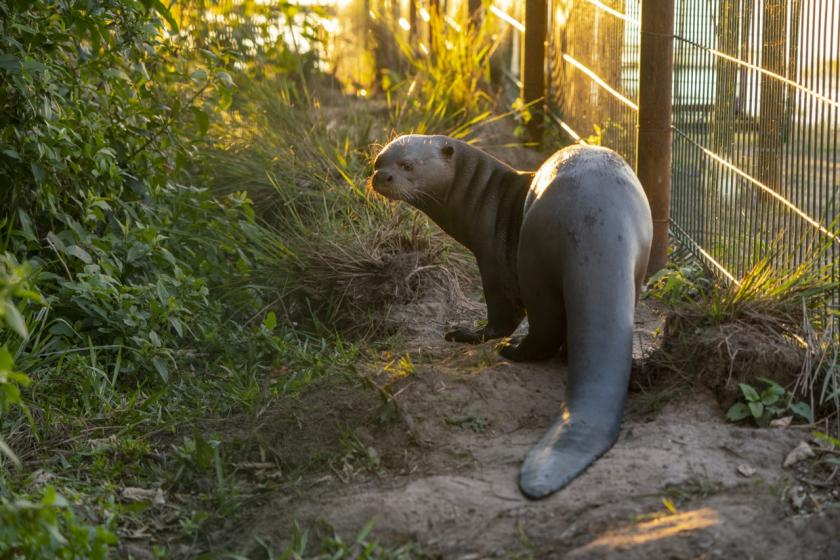
The perfect photo for a boy's quote.
You can meet adherents of street morality in the north and center of South America. Animals settle absolutely wherever there is fresh water: it does not matter whether it is a river, lake, stream, irrigation canal or reservoir. The main condition for deployment is the availability of food. Lots of food! Our gluttonous heroes need about 3 kilograms of meat per day, and even more for pregnant and lactating women. 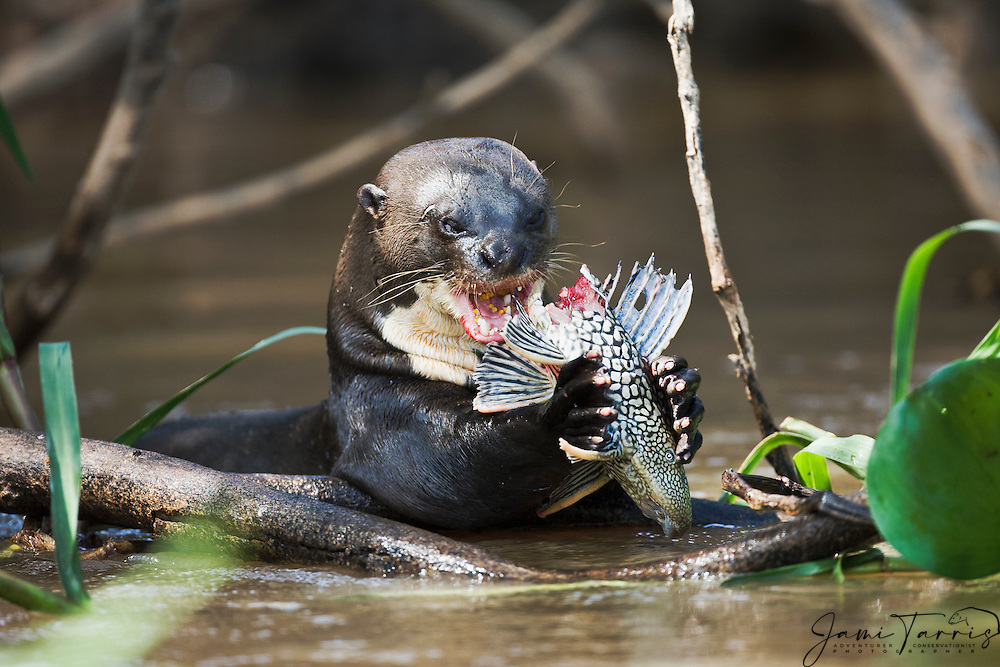
What did you want? Hatred of the world around us must be fueled with something!
It is not known what came to otters first, an insatiable appetite or the ability to provide this very appetite, but one way or another, it is not for nothing that the animals are considered the top predators in their food pyramid. Ideal anatomical data and hunting strategies, honed over years of evolution, help them occupy this level. 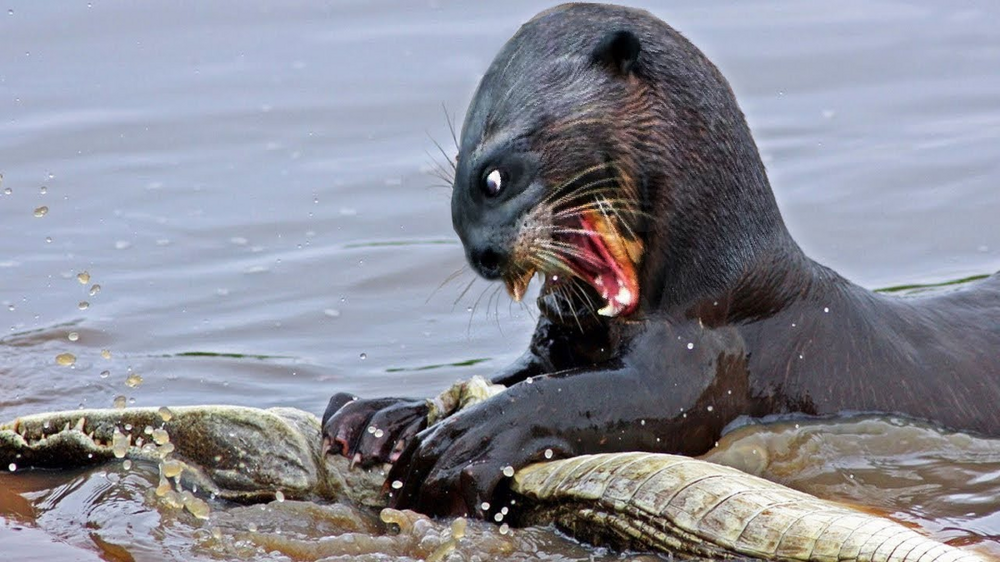
Someone is strangling snakes. And otters strangle not only boa constrictors, but also caimans!
As for the data, let's start describing it from the end, or rather from the tail. In otters, it is flat, muscular and shaped like a bird's wing. Thanks to him and his strong short legs, the animals really fly underwater! As a bonus to the membranes, the animals’ limbs are decorated with a manicure of long sharp claws - to deftly catch slippery fish. 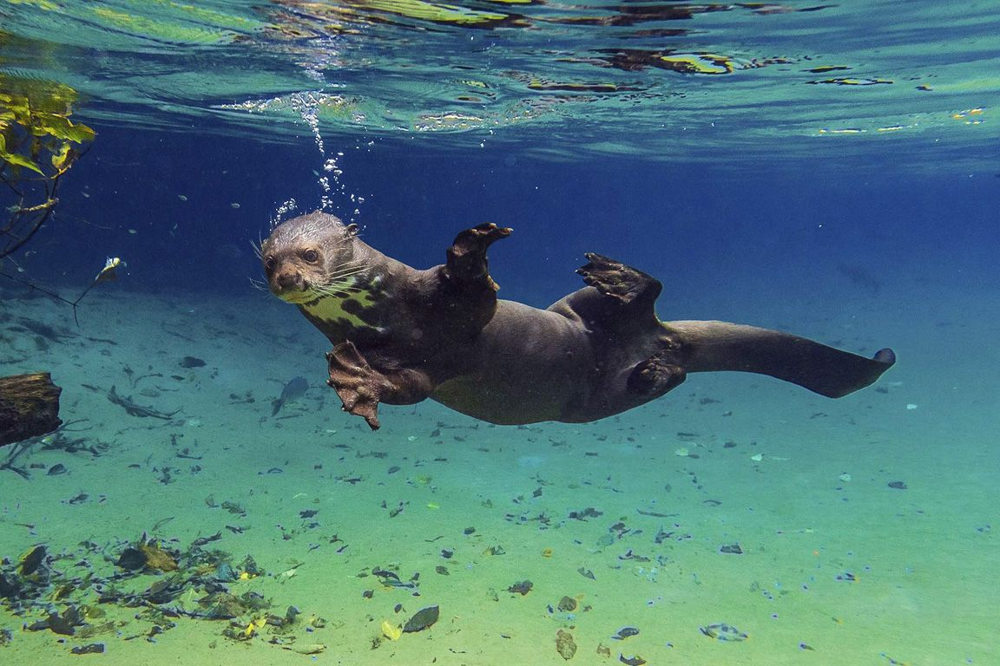
Otters have seven Thursdays a week. Because every day is a fish day!
Particular attention should be paid to the excellent sense of touch. Brazilian smart guys can literally feel the water! Long whiskers on the muzzle sense minute changes in pressure and current in the water column. This helps otters to very accurately follow swimming fish along the “trail” left by it in the water. And then the DAC, and dinner is served! But all these super-pumped characteristics would be a so-so advantage if it weren’t for Toretto’s syndrome. 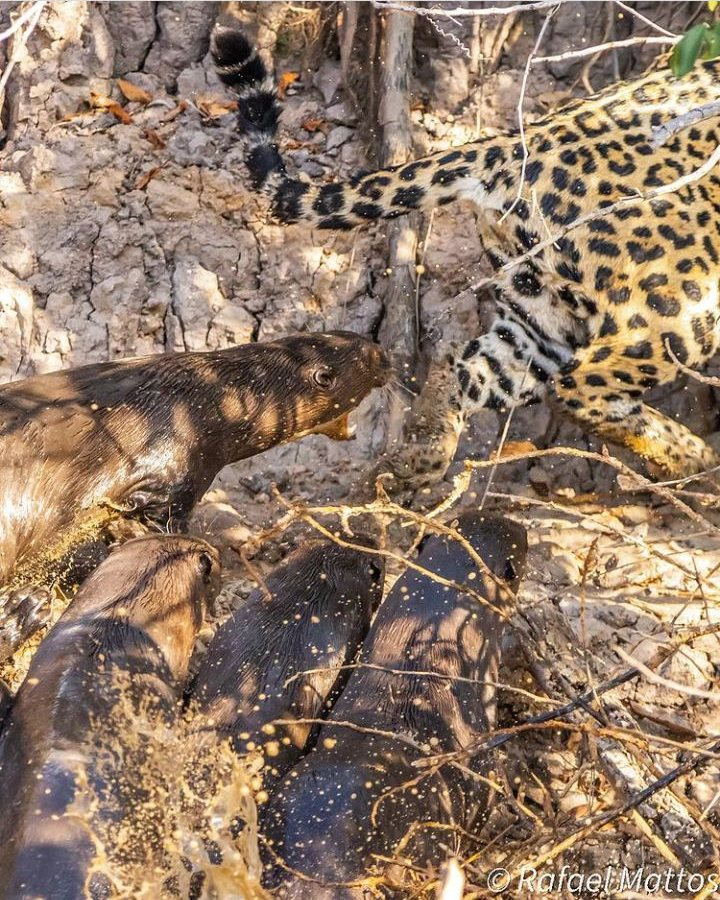
Together, the otters are able to drive away South America's apex predator - the jaguar!
The animals live in close-knit groups of 2 to 20 individuals. Strangers are rarely accepted into a pack of animals, so usually it is one big family. Together, otters do everything: rest, defend their territory, talk. Animals have a whole series of different vocalizations to more accurately convey information. Otters also hunt together. Animals often go out in search of food in pairs or in groups. If one otter is two meters of impudence, then a whole gang of lanky thugs becomes a threat even to crocodiles, caimans and anacondas! Even cold-blooded reptiles have nothing against a well-coordinated attack, deft dodges and powerful bites. 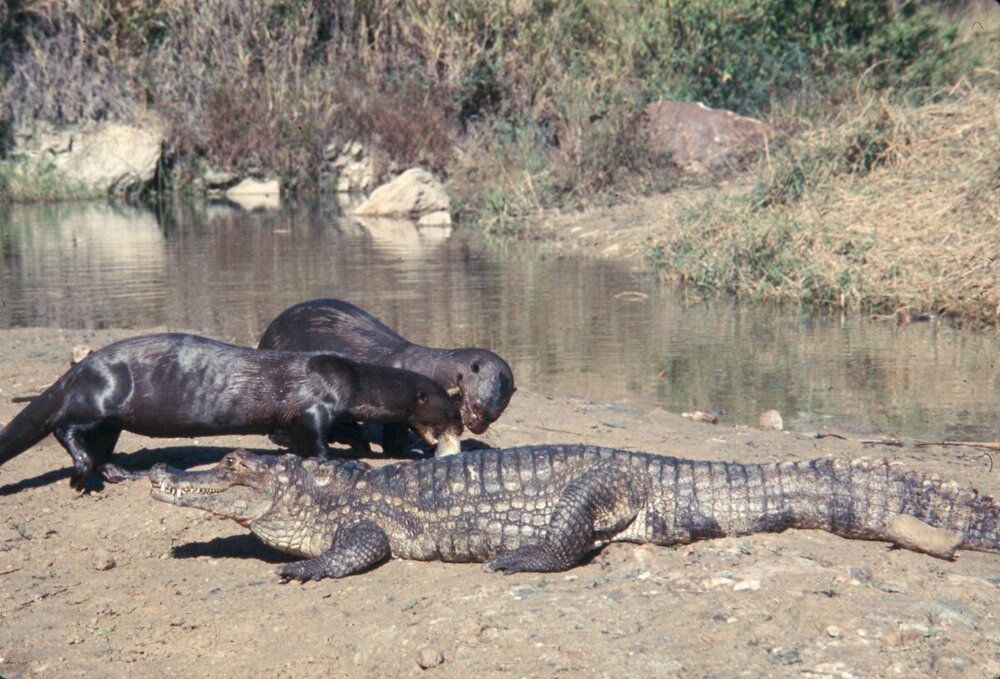
When gopniks come to the meeting, and you pretend to be an ordinary log.
Animals also approach breeding with group enthusiasm. No, this is not what you think: only two people are involved in the actual process of making otters. But they take care of the younger generation with the whole clan! The older ones raise, the younger ones get food. 
There is a strict hierarchy within the pack, where mother and father are the dominant couple of the family, whose authority is indisputable.
1-5 otters are born at the height of the dry season. At this time, the easiest way to catch a bunch of fish is in shallow rivers and lakes. Otters surrounded by care grow slowly: they will make their first swim only at three months, and milk feeding lasts for as long as 9 months! Only by the age of one year will children gain strength and begin to help the group on the hunt. The animals will remain with their parents and older brothers and sisters until they are about three years old, after which they will leave their native pack and try to create their own. 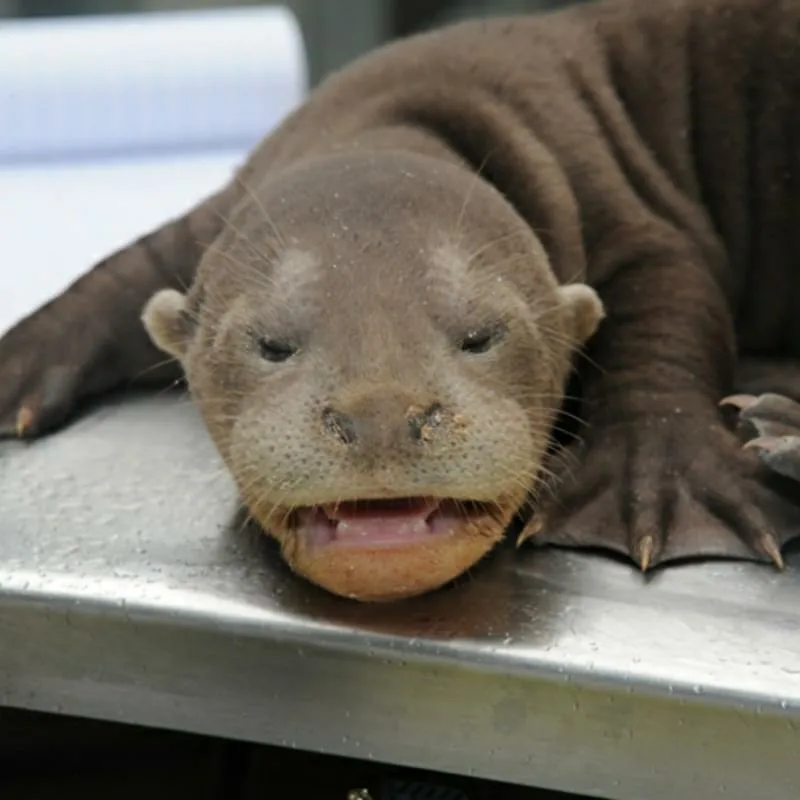
When you come to first grade for the first time and you don’t even understand what’s going on around you.
This may not be so easy today. Due to human activity, the giant otter's range is becoming more and more fragmented. The animals are not very friendly with the local population: firstly, otters are hunted for their fur - it is valuable and waterproof. Secondly, animals are destroyed as imaginary fishing rivals. 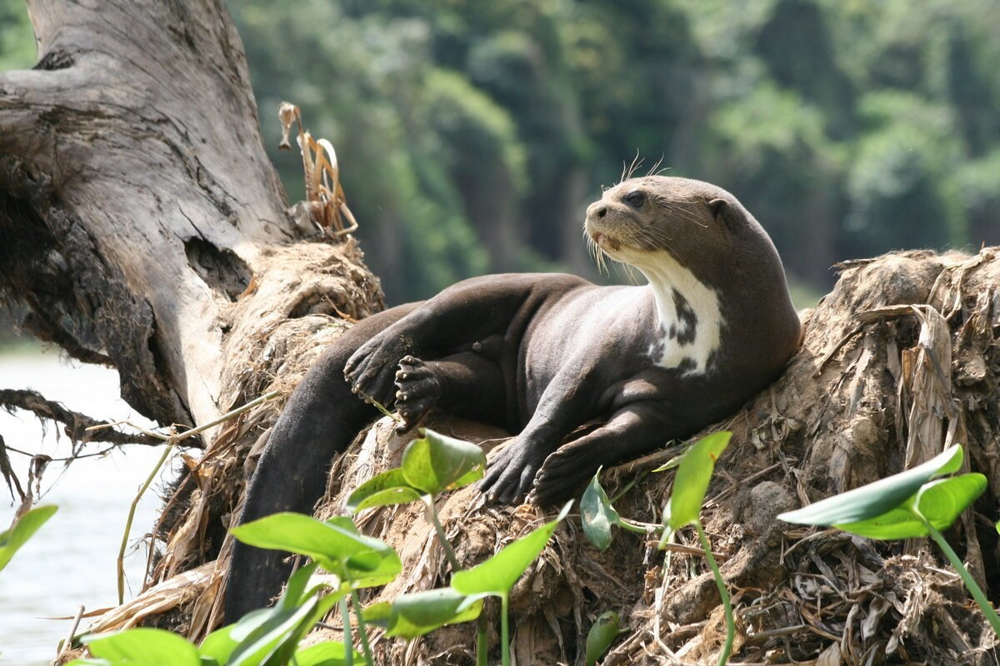
In local languages, the giant otter is called the "river jaguar". And looking at this photo, you readily believe it!
The giants are also not doing well with tourists. The intervention of bipeds can expose animals to severe stress, causing them to stop hunting at full capacity, which means they will not be able to feed the young and generally risk dying. In addition, otters are sensitive to some canine diseases. And when a crowd of tourists walks nearby, it’s a matter of time before you get infected with something.





